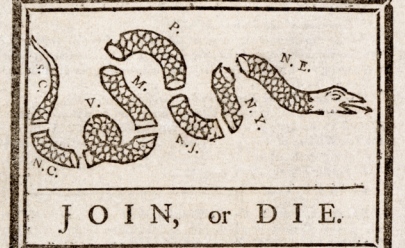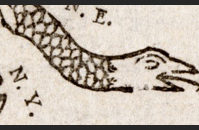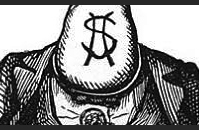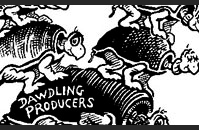POLITICAL CARTOONS AT A GLANCE:

Image Gallery
Social Commentary and Political Cartoons
Political cartoons (also known as editorial cartoons) are defined as illustrations or comic strips containing a political or social message that usually relates to current events or personalities.
Cartoonists use specific devises to get their message across:
Symbols (simple pictures that are understood to stand in for ideas or groups). Examples: Dove/Peace, Donkey/Democratic Party
Caricatures (drawing of a person that exaggerates his characteristics for comic effect). Examples: Big ears, extra long nose
Stereotypes (generalization, usually exaggerated or oversimplified and often offensive, that is used to describe or distinguish a group). Examples: Dishonest lawyers, Italian gangsters
Analogies (comparisons—this thing is like the other thing). Examples: a situation is compared to a well known event, book, myth
Juxtaposition (positioning people or things side by side). Example: putting a politician next to a $ sign
Irony (use of words to convey a meaning that is the opposite of its literal meaning, an outcome of events contrary to what was expected). Example: when someone says it is “beautiful” when they mean ugly or “as clear as mud”
Captioning and labels (used for clarity and emphasis). Example: words at the bottom or top of cartoon to further its message
According to Charles Press, author of Political Cartooning, in order for a political cartoon to be effective it must have the following four qualities:
- Artistic quality—but the artistry must not get in the way of the message
- Genuine sentiment—but it should not feel phony
- Fresh, uncomplicated imagery—should be striking, forceful, and amusing
- Lasting importance—the subject of the cartoon should be important so the cartoon can be understood by future readers
Political (or editorial) cartooning began in America with Benjamin Franklin’s “Join or Die.” The image was created to emphasize the importance of colonial unity and reflected the well known superstition about snakes coming back to life after being cut in half.
In the 18th and 19th Centuries political cartoons were commonly independent of other writing and were used to get messages across to those who could not read. Thomas Nast, considered to be the father of political cartoons, made a name for himself with his famous cartoons of William “Boss” Tweed and the Tammany Hall scandal.
Today, political cartoons can be found in newspapers, magazines, on opinion and cartoon pages— practically everywhere you look. Political cartoons have, according to the 2007 documentary The Political Dr. Seuss, “taken their place on the page and screen as valid outlets for expressing political thought, championing activism and affecting social change through creative use of visual art.”
Download a printable version of this At A Glance
TAKE ACTION:


EDUCATION PROJECTS:
Student Travel – WWII Educational Tours
High school and college students, learn the leadership principles that helped win WWII on a trip to France or during a weeklong residential program in New Orleans. College credit is available, and space is limited.
See You Next Year! HS Yearbooks from WWII
Collected from across the United States, the words and pictures of these yearbooks present a new opportunity to experience the many challenges, setbacks and triumphs of the war through the eyes of America’s youth.
The Victory Gardens of WWII
Visit the Classroom Victory Garden Project website to learn about food production during WWII, find lesson plans and activities for elementary students, get tips for starting your own garden and try out simple Victory Garden recipes!
The Science and Technology of WWII
Visit our new interactive website to learn about wartime technical and scientific advances that forever changed our world. Incorporates STEM principles to use in the classroom.
Kids Corner: Fun and Games!
Make your own propaganda posters, test your memory, solve puzzles and more! Learn about World War II and have fun at the same time.






